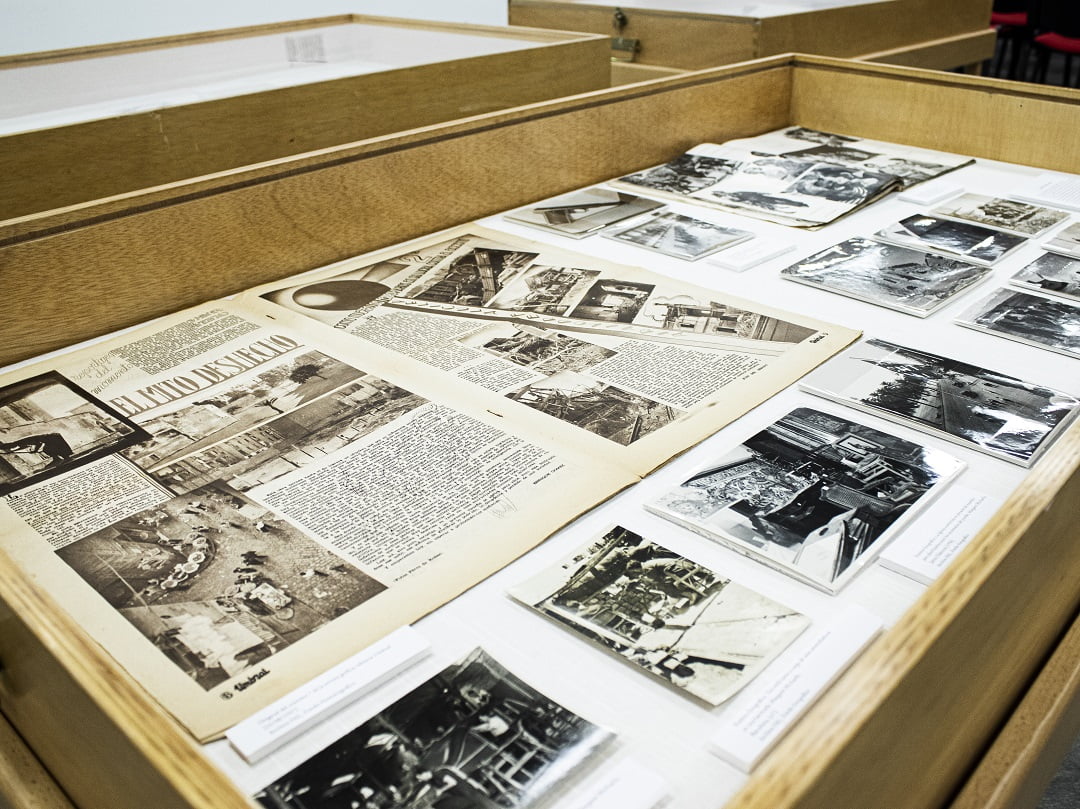Printed four times a year, Brand [‘fire’] has been published in Sweden since 1898. Freedom itself has been published since 1886, but the pause for Freedom in the 1930s means they and Brand can argue over who’s the oldest. I spoke to Viktor Mauritz, an editorial collective member, about how the newspaper was founded and what it means today.
“There wasn’t really an organised anarchist movement in Sweden in those times. The ones who started the paper identified themselves as social democrats.”
And it’s still a paper that tries to have a broad remit,
“We try to be inclusive, but it is still clearly a non-party political newspaper which has its base in the anti-authoritarian movement.”
Every issue is based on a theme, focusing on news and useful discussion for activists.
“Social movement, political theory, political debate, aimed at activists. We don’t have any goal of reaching hundreds of thousands or even tens of thousands of readers, not in this political climate; rather, we speak to people interested in radical politics and maybe have some experience of it.”
“Sometimes the newspaper does get a broader reach, but that can be because of something that hit a nerve with people.”
“Of course, often you want to reach out or build bridges with other kinds of movements that seem close, or you are inspired by in some way.”
“We put out an issue for which I was one of the editors, and it had the theme ‘the crisis of the labour unions [fackets kris]’. It was about the crisis in the LO federation [Swedish equivalent of the TUC, for blue-collar workers]. Not so much about TCO [the office workers’ federation] or Saco [the academic professions’ federation].”
“We expressly hoped this would be read by people who work in the unions and may be a bit critical.” Brand sent copies of this issue of the paper to all the many newspapers run by the unions who are members of the LO federation.
“Similarly, in the latest issue, we had the theme ‘men’s violence [mens våld]’. In that case, we weren’t thinking about LO, but definitely about the institutional women’s movement, like ROKS and Unizon [federations of women’s shelters and helplines]. The feminist institutions, you could say.”
What are the best things that Brand does? In the issue we just discussed, the editors had called for people to send in their personal experiences, including someone Viktor knows.
“I know about the whole story of what this person has gone through, who wrote about her experience of living with men’s violence. She was very happy when it was published in the paper and shared it proudly. All of the work with that issue, especially the publishing of her text and how she shared it. That felt good.”
Why has Brand survived for so long?
“It’s a good question. I think it is a newspaper that has lived many lives.
In the first place, there is always a matter of chance that it’s been a name, a newspaper, and a tradition picked up by different groups who stood at different historical crossroads. When the newspaper could have been shut down, it never was, but there were two years in the 2000s when no issues were published. Because the old editorial board couldn’t manage it.”
“Back in the decade of the 1900s, it had at least 20,000 readers and came out every week. It peaked in the first third of the 20th century. But there weren’t any issues in the early 21st century until a few people from the old editorial board and many new people got it going again. The editorial board moved from being based in Malmö [in the far south of Sweden] to Stockholm.”
After becoming a newspaper with professional staff in the early 20th century, the newspaper became a part of the wider movement after the 1940s but crashed in the 1980s.
“Back then it was more squatters, punks, people who came from a new movement, who took over the newspaper […] you could say it became a new paper.”
That was when Brand got its current logo, with the black wildcat or sab-cat.
“Then a new crew came in the 90s, then a new crew in 2010. And there’s been a continuity from that day to this.”
“I think people have chosen to pick up the paper again and again because it was such an established newspaper […], and there’s a history that many activists want to keep alive in some way.”
“It’s fascinating how it’s become a trademark that people want to pick up – but still, it’s been available for each new generation with maybe slightly different values to pick up.”
But Viktor thinks renewal and a generational shift is always needed for things to live on – and some other leftist papers have not managed to be open to making that shift.
“In those cases, the same crew keeps going and gets a bit old and grumpy. And think the youngsters don’t know anything. And the dust piles high, and the paper slowly dies. You can see that with leftist papers in Sweden now. It’s happening. Much of the press from the 1960s-70s left is having a bad time. While the leftist papers that are strongest are the ones that are really old, like Brand and Flamman [‘the flame’, founded 1906], and Arbetaren [‘the worker’, the syndicalist paper founded 1922].”
“These papers have needed to be renewed so many times that it’s maybe easier to do it one more time.”
~ Interviewed by Loukas Christodoulou
Image: Piotrus / Public domain / The very first issue of Brand (from 1898)








